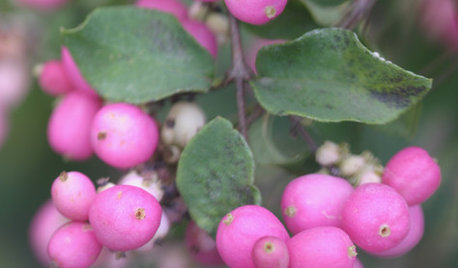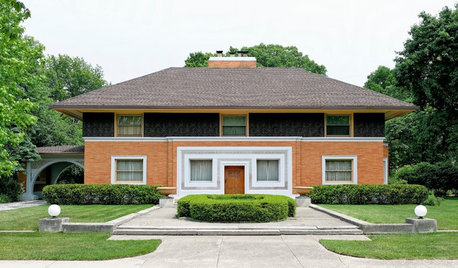Winterize now in Chicago?
Ryan1104
9 years ago
Related Stories

ARCHITECTUREHouzz TV: Christmas in Chicago Will Make You Want to Move There Now
See Millennium Park, historic brownstones and other architectural landmarks lit up for the holiday season
Full Story
LANDSCAPE DESIGN5 Berry-licious Shrubs to Plant Now for Winter Interest
Showy color during snow season? You bet. These shrubs will wake up a garden with colorful berries when other plants are asleep
Full Story
EVENTSView Frank Lloyd Wright’s Early Work on a Chicago Architecture Walk
This annual spring tour features Chicago-area homes by the master of Prairie-style architecture and those who worked with him
Full Story
VACATION HOMESHouzz Tour: Moss-Covered Lakeside Cottage Now a Modern Marvel
A 1949 Michigan weekend cottage with a sunken roof gets a makeover that stays true to the house's humble roots
Full Story
KITCHEN OF THE WEEKKitchen of the Week: Good Flow for a Well-Detailed Chicago Kitchen
A smart floor plan and a timeless look create an inviting kitchen in a narrow space for a newly married couple
Full Story
CONTEMPORARY HOMESHouzz Tour: A Stunning Church Conversion in Chicago
A former Methodist church built in 1901 finds new life as an awe-inspiring family home
Full Story
LOFTSHouzz Tour: A Chicago Loft Rises to the Rafters
Voluminous ceilings and immense windows were the starting point for a renovation that takes two old apartments to new heights.
Full Story
HOUZZ TOURSHouzz Tour: Schoolhouse-Turned-Home in Chicago
A family of seven settles into a dream modern-industrial home that reflects both their green philosophy and their fun, casual lifestyle
Full Story
ARCHITECTURECity View: Chicago's Contemporary Design Will Blow You Away
Take a whirl through the Windy City's interiors and you might be surprised — they're not all in the conservative camp
Full Story
HOUZZ TOURSMy Houzz: Eclectic Industrial Style in a Charming Chicago Home
A cool black and white palette and DIY touches make this updated Victorian shine
Full StoryMore Discussions







morpheuspa (6B/7A, E. PA)
maplerbirch
Related Professionals
Danbury Landscape Architects & Landscape Designers · Ballenger Creek Landscape Architects & Landscape Designers · Camas Landscape Architects & Landscape Designers · Carson Landscape Architects & Landscape Designers · Middle Island Landscape Architects & Landscape Designers · Bainbridge Island Landscape Contractors · Dallas Landscape Contractors · Franklin Landscape Contractors · Live Oak Landscape Contractors · Mahwah Landscape Contractors · Mastic Beach Landscape Contractors · Northport Landscape Contractors · Wilton Landscape Contractors · Malden Swimming Pool Builders · Shady Hills Swimming Pool Buildersmorpheuspa (6B/7A, E. PA)
danielj_2009
maplerbirch
morpheuspa (6B/7A, E. PA)
maplerbirch
morpheuspa (6B/7A, E. PA)
maplerbirch
morpheuspa (6B/7A, E. PA)
maplerbirch
BoatDrinksq5
yardtractor1
morpheuspa (6B/7A, E. PA)
morpheuspa (6B/7A, E. PA)
BoatDrinksq5
yardtractor1
yardtractor1
BoatDrinksq5
morpheuspa (6B/7A, E. PA)
morpheuspa (6B/7A, E. PA)
maplerbirch
morpheuspa (6B/7A, E. PA)
danielj_2009
morpheuspa (6B/7A, E. PA)
BoatDrinksq5
yardtractor1
BoatDrinksq5
morpheuspa (6B/7A, E. PA)
yardtractor1
morpheuspa (6B/7A, E. PA)
danielj_2009
maplerbirch
morpheuspa (6B/7A, E. PA)
maplerbirch
morpheuspa (6B/7A, E. PA)